Openreach Consults UK Broadband ISPs on Copper Switch-Off UPDATE
Openreach (BT) has today officially launched its first major industry consultation on the process of switching from their old legacy copper broadband and phone lines to new ultrafast Fibre-to-the-Premises (FTTP) infrastructure, which includes discussions over how they should “eventually retire the existing copper network.”
At present the network access provider is in the process of deploying “full fibre” FTTP technology to cover 3 million homes and business by the end of 2020 (March 2021 financial) and after that they have an ambition to reach 10 million premises by around 2025, although the latter is still contingent upon some degree of industry, Government and Ofcom agreement over how this is done.
Pure fibre optic networks like this typically run their optical fibre cables all the way to your doorstep and use laser light to deliver significantly faster speeds (e.g. multi-Gigabit), as well as a much more reliable service. At present a lot of countries are busy deploying FTTP networks like this and at some point that means the older, slower and less reliable copper lines will need to be switched off (too costly to keep both running side-by-side).
Suffice to say that this move from a heavily regulated copper network to a new FTTP platform presents more than a few challenges. Some of that work, such as the gradual switch from analogue phone (voice) services to an all-IP (VoIP etc.) style network, are already taking place and should complete by 2025.
However the physical switch-off of copper will be a much longer and more complicated process. Indeed it’s highly likely to take longer than the Government’s current aspiration of 2033 for “nationwide” coverage of FTTP.
Scope of their New Consultation
Openreach is seeking input from Communications Providers on three key areas:
* How it builds the new network, which is growing fast.
* How the industry should migrate customers smoothly onto the Openreach network, once it’s built and;
* How Openreach should eventually retire the existing copper network.
Within the consultation, Openreach has also outlined a number of guiding principles, which it says will be crucial to achieving a successful transition. These include:
* Building contiguous footprints within its exchange areas to avoid creating new not-spots.
* Working closely with CPs to upgrade every customer in those areas quickly once the new network is built.
* Offering a compelling, simple portfolio of products that supports new retail voice and broadband services.
* Upgrading the large majority of people voluntarily, whilst developing an industry process for late adopters.
* Withdrawing copper-based services progressively.
* Developing a consumer charter with industry and Ofcom that encourages transparent communications to homes and businesses affected, and includes protections for vulnerable customers.
Openreach has previously indicated that ideally they’d like to gradually switch off the old copper network as the new FTTP one goes live (exchange by exchange), which would reduce their maintenance costs and thus turn “full fibre” into a much more attractive investment. If only it was that easy.
As usual there are some big roadblocks here in terms of both regulation and competition. For example, FTTP is a more expensive service and not all customers will be happy about being forced to pay extra for something that they might not need. Not to mention the extra disruption of a new fibre line installation. A lot of modern regulation is also based around copper infrastructure and this will have to be overhauled by Ofcom.
Several ISPs have also invested heavily in unbundled copper lines (e.g. Sky Broadband, TalkTalk, Vodafone) and might be reluctant to let go of that asset, which is further complicated by the fact that some of those same providers are already building their own rival FTTP networks. Competitive interests and regulatory complexity are tricky areas to tackle, leaving plenty of scope for legal fights and delays.
Katie Milligan, Openreach MD for Customer, said:
“More than 16 million homes and businesses could order better broadband connections over our network right now, so we’d encourage everyone to check the services available to them and upgrade today.
At the same time, we’re consulting with broadband providers to decide how and when we upgrade customers to even faster, more reliable and future-proof, full fibre broadband.
Our new network will place the UK at the forefront of the global digital race and provide a major boost to the UK economy, so we’re determined to create a plan that will benefit of every UK community, by upgrading customers quickly, smoothly and affordably.
We believe this consultation is crucial to that process, and it will support further investment from across the industry. We’re really ambitious about upgrading the UK to the fastest, most reliable broadband there is.”
Margot James, UK Minister for Digital, said:
“We’re building a Britain that’s fit for the future, and our plans for a national full fibre broadband network underpin our modern Industrial Strategy. Upgrading to gigabit capable connections will benefit homes and businesses all across the UK.
I welcome Openreach’s consultation on how to make this process as simple and efficient as possible whilst ensuring a competitive market is in place for all consumers and infrastructure providers.”
At this point it’s worth noting that a lot of other countries in Europe, while broadly well ahead of the United Kingdom in their FTTP roll-outs (here), have only made “limited progress” toward the copper switch-off. At least that was the view of a recent report from the FTTH Council Europe on this very issue (here).
Naturally those who aren’t reached by FTTP in the UK until 2033 will still need to use that copper network (e.g. FTTC, G.fast broadband), which means a complete switch-off would be unlikely to happen until after FTTP has reached all corners of the country on Openreach’s own network (likely to be years after 2033 since that date won’t be met by Openreach alone – other operators are also deploying fibre).
Indeed consumers will need to be given some time to adapt and consider their options, particularly when confronted by the possibility of another price rise and more work on their property. Explaining this to vulnerable users (pensioners, those with a disability etc.) may prove to be particularly difficult. Providers will no doubt fear a hostile reception from some customers.
However the prize for getting this right is not to be overlooked. As Openreach says, “the transition will also deliver huge benefits to the industry and UK in general, providing greater broadband speeds and reliability, a significant boost to productivity and competitiveness, and a digital platform that’s expected to serve homes and businesses here for many decades to come. ”
The new consultation will be open for six weeks until 3rd May 2019. After that, Openreach will publish a summary of responses along with its next steps. We should add that there are are 5,500 Openreach exchanges across the UK and around 1,300 of those serve 75% of premises. A typical exchange area in a town or city serves 20,000 to 30,000 premises.

UPDATE 1:58pm
We’ve now had a chance to read through the private consultation document and have noted a few useful pieces of information, although it should be said that this is all very much subject to change. Openreach have only just begun the process of consulting upon and designing a solution.
Firstly, the operator will soon start to trial their exchange-based approach to migration. Under this approach they will upgrade a town or city in 2019 and then work with ISPs to trial migration, with the target being to achieve a complete move to FTTP by the end of 2022. A location is still to be selected, although Salisbury sounds like a viable option given this week’s universal coverage news (here)
Secondly, upon reaching the “stop sell” point, Openreach said they would first need to declare an exchange as being “ultrafast enabled” (target for this is 24 months after roll-out starts).
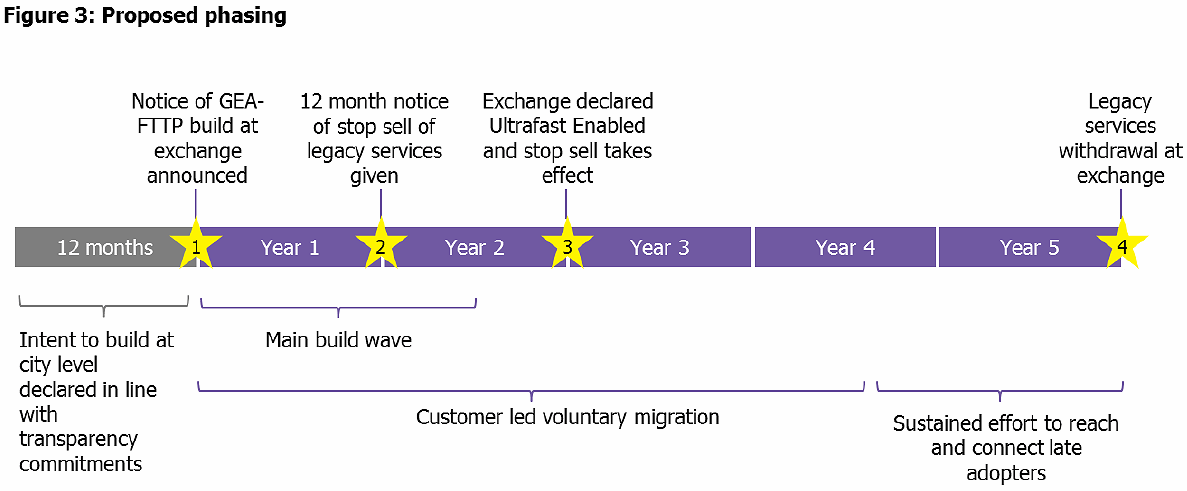
In reality this status would be achieved once 75% of premises in that exchange are able to receive an “ultrafast” service, which they say could be via FTTP, G.fast and oddly even “vectored VDSL” (FTTC). After this it may be another 3 year wait before legacy copper services are fully switched-off.
The current FTTC/VDSL2 product only goes up to 80Mbps and Openreach never universally implemented (only selectively) Vectoring on that (this could push it over the 100Mbps+ “ultrafast” level), which was due to various technical and regulatory problems. Some of those issues still exist and VDSL2 would struggle to hit 100Mbps on a lot of lines, so we suspect this may not be a serious large-scale option without big changes.
Thirdly, Openreach have already reduced their G.fast roll-out plan from 10 million to 5.7 million premises by 2020, which was due to their greater focus on FTTP. Today’s consultation notes that they might in the future need to take an even more targeted approach to G.fast deployments (i.e. only using it in specific areas as part of the FTTP roll-out strategy). Put another way, the roll-out may shrink or perhaps they might do deeper FTTdp based G.fast (closer to homes via smaller nodes).
Fourthly, the proposed plan seems to involve Openreach offering a revised “anchor” service at the 40Mbps (10Mbps upload) level for FTTP, which could be used to entice customers off slower copper ADSL2+ broadband lines. This product could be at a regulated price (like the same tier on FTTC today), albeit probably with a “small premium” over slower alternatives to reflect the greater value of FTTP. They may also offer this via G.fast too.
Mark is a professional technology writer, IT consultant and computer engineer from Dorset (England), he also founded ISPreview in 1999 and enjoys analysing the latest telecoms and broadband developments. Find me on X (Twitter), Mastodon, Facebook and Linkedin.
« Openreach Replace Graffiti on Sheffield UK Street Cabinets with Art
Latest UK ISP News
- FTTP (5669)
- BT (3552)
- Politics (2585)
- Openreach (2334)
- Business (2311)
- Building Digital UK (2265)
- FTTC (2056)
- Mobile Broadband (2022)
- Statistics (1818)
- 4G (1709)
- Virgin Media (1659)
- Ofcom Regulation (1488)
- Fibre Optic (1419)
- Wireless Internet (1412)
- FTTH (1382)



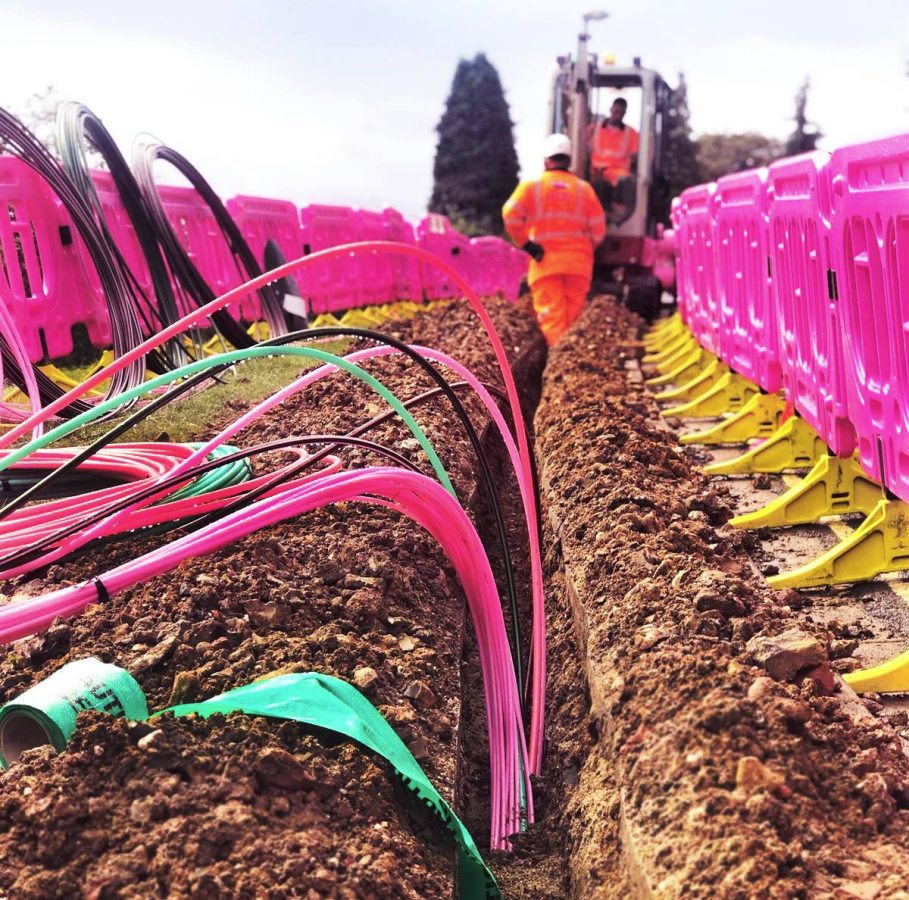



























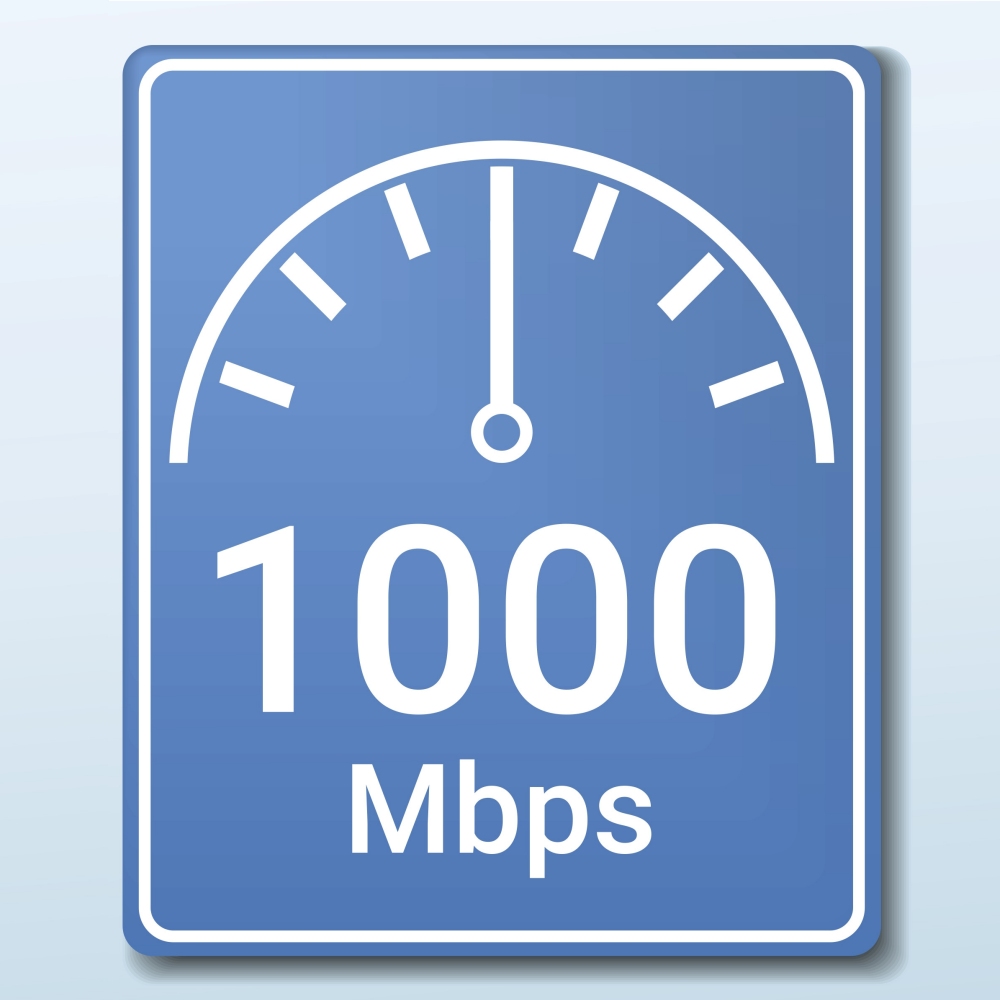
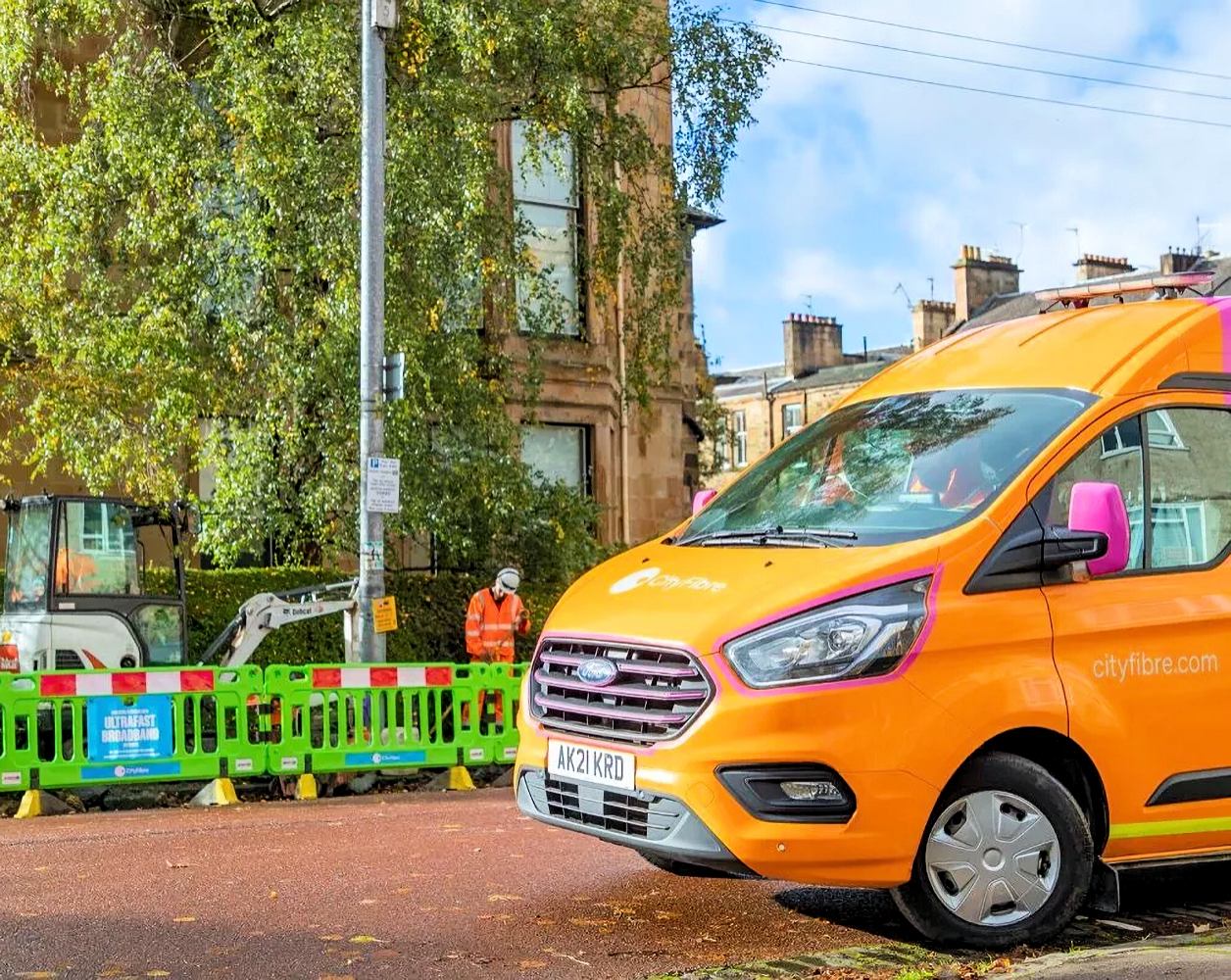





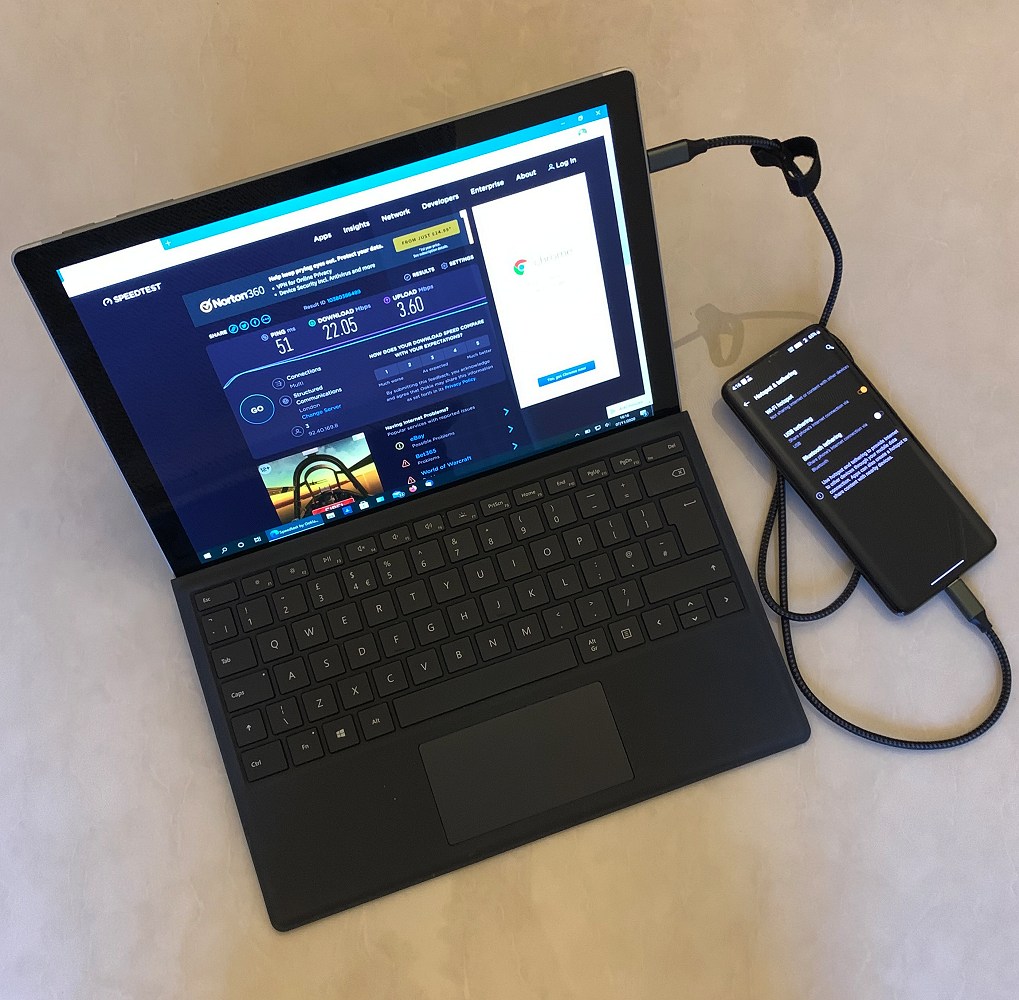


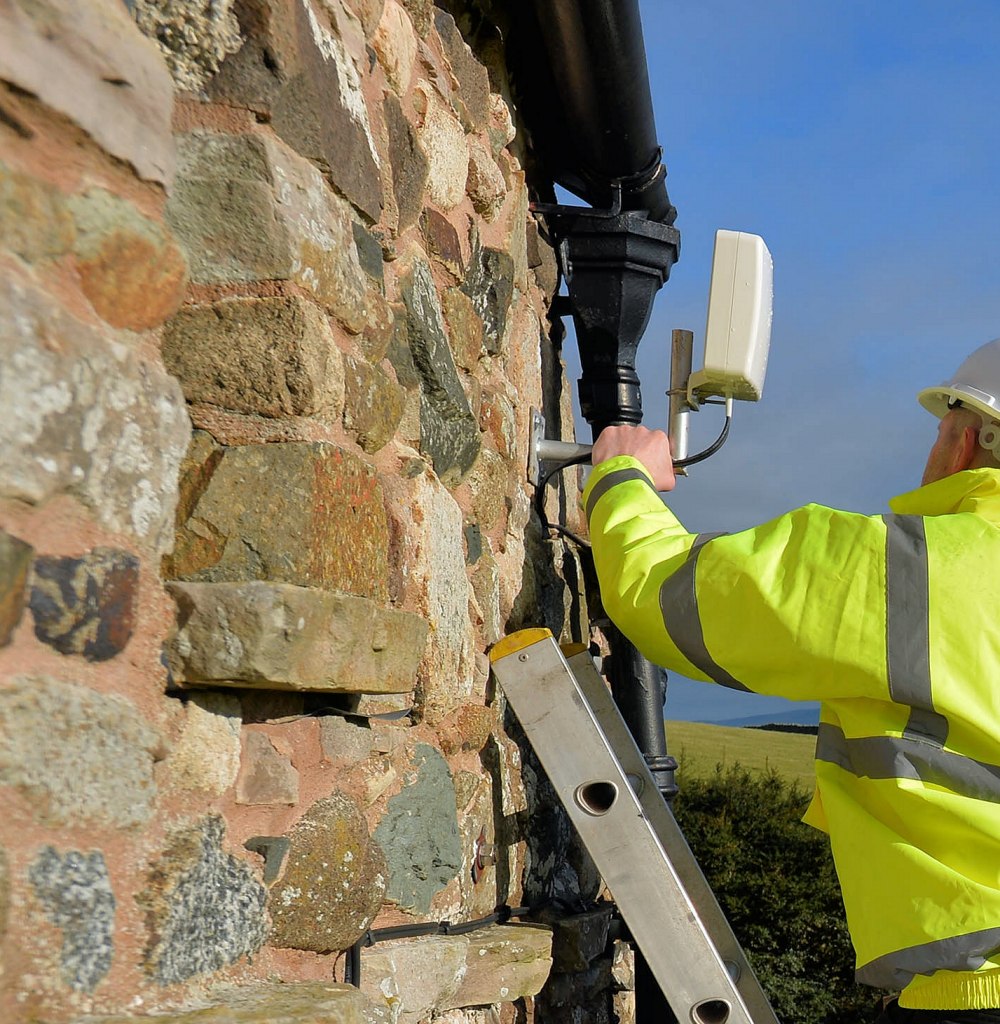






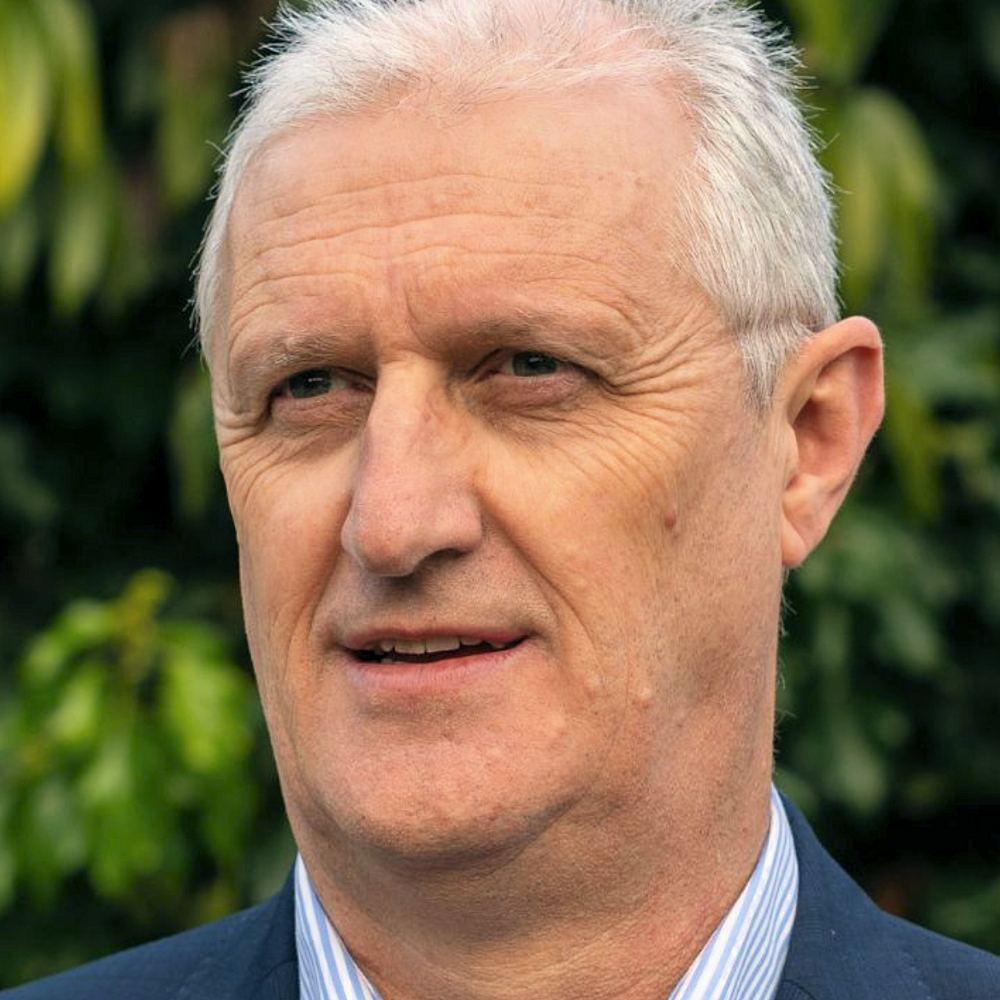

It’s great that the conversation has started & plans can be made.
“FTTP is a more expensive service and not all customers will be happy about being forced to pay extra for something that they might not need”
Surely lower tier services will still be offered, and at least it means there should be no more ‘upto’ speeds?.
Easy to say, but so far we haven’t seen something on the same exact pricing level. Lest we forget that it’s not just broadband we’re talking about here, but those seeking voice-only services too.
I’d be shocked if ofcom didn’t mandate a low income basic service for both voice and bb.
“at least it means there should be no more ‘upto’ speeds?.”
Pretty sure FTTP services will still be sold as “up to” as no ISP can guarantee max line speeds 24/7/365, due to being a shared /contended service. Or at the very least there will be min speed guarantees on FTTP, such as the BT Retail’s 330/50 offering with 150 Mbps guarantee.
“up to” speeds should have technically already ended when the ASA started to require that ISPs only promote “average speeds” as measured at peak times, although some smaller providers haven’t yet got that message.
I have just had business FTTP installed and the speed is much better than the rural snail’s pace it was before. However, it’s somewhere around 35 Mbps, no more than my son is getting with FTTC in the centre of our local town. It’s significantly more expensive but we were offered no choice other than FTTP and a choice of one supplier only. That supplier has kindly provided a triple cordless VOIP phone free but clearly states that only their dedicated cloud phones will work. Even buying identical phones from their own store, at half the price, will apparently not work (I’m unconvinced).
One other problem is that we now have box on the wall at our front entrance measuring 20 x 20 x 5 cm. Pretty it ain’t.
i presume there is greater detail in the consult somewhere as this seems very vague.
You won’t get detail at the first consultation, it’s all about starting the conversation in a formal capacity.
Usually when I deal with consultations there is a detailed paper with a lot of questions for respondents.
“10 million premises by around 2025”
I wonder how many will actually be connected out of that 10 million by 2025? “Passing” properties is the easy bit and tip of the iceberg. Openreach seem to have no appetite for promoting and connecting FTTP to properties, because that is the hardest job and the metric everyone is using is properties passed. It’s relatively easy passing each street with some fibre, a different kettle of fish connecting up 10 million properties, which are needing a minimum of 10 million appointments, with 10 million days taken of work by customers, then taken again when they don’t turn up!
If BT want to decommission copper, they need to stop just passing and actively connect up each property as they go. The vast majority of people passed by fibre will have no idea they can order it and what benefits it brings etc, so you can’t just expect that the whole network naturally switches over to FTTP.
Take-up of FTTP on Openreach’s network is already quite strong.
https://www.ispreview.co.uk/index.php/2019/01/bt-end-2018-on-uk-fttp-and-gfast-broadband-cover-of-2-6m-premises.html
In terms of marketing, that is more down to the ISPs at retail level. At the moment many of their biggest customers are either building their own FTTP or looking at joining alternative platforms, which complicates the situation. We have yet to see TalkTalk, Vodafone or Sky offer Openreach based FTTP (albeit expected to follow).
As for the switching process, as above Openreach sees it as being gradual with a voluntary approach at first and then mandatory further down the road.
They haven’t the staff to do it street by street in quantity – certainly not in terms of keeping up with the passed by.
Given the way we are starting to see fibre cities by both OR and others we will start to see more block migrations though which tend to solve many of the problems of missed appointments etc.
As Mark suggests the big boost of fttp will be others ISPs reselling. Sky I think it the key here. When sky abandon sat for their TV service and transition to fttp, as is inevitable, they will do more to drive through adoption of fttp/Gfast than any other factor.
I have fttp strung on poles, 30ft from my bungalow but open reach will not connect me to the fttp agg node due to ‘commercial decisions’, ie bduk will not cover the cost as I am supposed to get 15/20 mbps on fttc. When performing speed tests I am actually getting 5/10mbps, why can’t openreach be forced to connect homes they are passing at the same time that want fttp and are willing to pay the extra, looking at some of the isp’s offering fttp the prices are no more then an extra 10/15 pounds a month. A lot of people would quite happily pay the extra.
@Admin “Take-up of FTTP on Openreach’s network is already quite strong.”
I’m not so sure it is as strong as those figures suggest. Out of 567,000 properties passed on that table, they have 169,000 FTTP connections, however how many of those are new build developments where there is no copper anyway and FTTP is the only way?
If you want to quote Q4 2017/2018 figures that are a year out of date then fine.
Last quarter figures are…
893,000 premises passed
267,000 premises connected
As for new build etc if only there was someone already working hard tracking this sort of stuff.
@Phil. Andrew got in first here, but the link I gave was for 2019 so I’m not sure why you’re using the older figure? 267K out of 893K is for FTTP, in early take-up terms, pretty good going.
Hmm Phil if you’re the same philipd from thinkbroadband Andrew has already corrected you on the fttp takeup figures once?
Fttp take up is pretty good given the lack of real push on fttp yet.
Phil’s numbers may be out of date, but he’s on the right track. Lots i believe are MDU’s, whilst the more interesting metric is how many of those 267k subs are actually paying for a faster service. If you dig through BT’s KPIs then you can find that only ~65k of them (50k retail and 15k b2b) are taking “ultrafast” speeds i.e. >100mbps, whereas the majority of FTTP subs (75% of them) are using FTTP for FTTC like speeds.
This is really the crux of the problem – FTTP is a great technology, but most people can do what they need to do online with 50mbps, so even when they get FTTP most are only paying for FTTC speeds. There’s no demand to pay more for faster speeds. Take a look at what has happened to consumer spending on broadband in some of the most advanced fibre markets in the world post fibre deployment….
@Mark Jackson
I just followed the link so not sure how I ended up where I did :-). Anyway last years figures give a ~30% take up, 2019 still approximately 30% take up, but again, I wager the take up is mostly new builds where there is no other option to take FTTP and these are a quick and easy win for Openreach with nice clean unblocked ducting and blue pull cords all there waiting. Converting existing copper customers to FTTP which will be required in order to eventually “turn off” copper is a different prospect. For one, you have to get people to order the service, and two, considerable resources are still required (regardless of how good progress appears with properties passed) to wire people up to fibre.
I just think there is a danger the metric of properties passed which seems to the one we see pushed all the time hides the large amount of work that is still required to convert decades old copper to a fibre network.
It would be interesting to see that where fibre is laid as “passing properties with an existing copper service”, what the take up actually is?
So pay to jump the queue of work to be done, or sit back and wait for analysis to appear in time for free as things are slowly worked through.
Since GEA-FTTP appearing in areas with VDSL2 at superfast speeds is pretty new i.e. a matter of a few months, you are going to see a very low take-up. Just like in the first few months of Virgin Media rolling out Project Lightning to areas there was a low take-up taking three years to reach 30%.
As for not liking premises passed, without knowing that figure you CANNOT judge the take-up that you are so interested in.
“https://www.ispreview.co.uk/index.php/2018/10/openreach-to-stop-providing-battery-backup-for-fttp-broadband.html
Last quarter figures are…
893,000 premises passed
267,000 premises connected”
Hmm so 893,000 premises passed and an aim to pass 25 Million by 2025.
So only another 24.1 Million to go in 5.5 years or if you want a rough average of just under 4.5 Million a year or a little over 1.1 Million per quarter. (being generous and taking the year as 4 quarters unlike the 3 BT give it).
Considering they have not even passed 1 Million in how many years of FTTP rollout??? I will not be holding my breath for them to meet their new lofty “aims”.
Or if its still 10 Million FTTP only aim then that is…
another 9.1 Million to go
Or average of just over 2 MIllion per year
Or 500,000 per quarter (again based on 4 quarters in a year to be generous)
Good luck with that also.
we’re @ ~14k/w atm.
Are you trying to say they are currently passing 14,000 per week?
If so going to need to ramp that up quite a bit.
14,000 a week times by 52 weeks in a year times by 4.5 years equals under 3.3 Million come end 2025.
Given it was a matter of hundreds a week before Fibre First kicked in it’s not doing too badly as far as ramping up goes, especially given the vast majority of that is brownfield now where before there was very little. No reason why they can’t be at 20k/week in the not too distant given their investment in training, etc. There’s a million a year.
Where did you get 4.5 years from by the way? Did I miss something? Pretty sure we’re not in mid-2021 already?
Reading up that wasn’t a typo. 4.5 years as the timeframe to end of 2025 is used repeatedly.
As of right now Openreach have 6 years and 8 months, plus change, to hit any target – 6 years takes us to March 2025, the rest to December 2025 – this assuming calendar year not financial. If financial they’ve a shade of 7 years.
‘Or 500,000 per quarter (again based on 4 quarters in a year to be generous)’
There are definitely 4 quarters in a year. No need for generosity. At 500,000 per quarter Openreach would be at over 14 million homes passed – they’re at nearly a million now and would have 26 quarters plus another couple of months to take it over the 14 million.
Maths is cool.
If you read there are 2 figures 3 million by March 2020
And 10 Million by 2025 (NOT END that bit is the typo)
March 2020 to start of or BY 2025 would be a little over 4.5 years. Or if they/you want to take it to the wire 4 years nine months.
Ill be the first to admit though my maths considering it was done very quickly in my head can indeed be wrong.
Though if your figures are any better and you have more faith in Openreach thats fine.
Lets keep it even more simple and focus on the 3 Million by March 2020 which is only 1 year away shall we.
The last recorded known figure is currently 893,000 for FTTH.
Its March 2019 at the moment, and if we are generous and say since that 893,000 figure they have reached 1 Million or even 1.5 Million, that means they have basically as near as damn it ONE year to do another 1.5 Million.
Or and do feel free to correct this again. Based on 52 weeks in a year that means they need to get cranking and be reaching NEAR to 30,000 a week to hit a the 3 million by March 2020 (and thats being kind and assuming they are at 1.5 Million already which id say is unlikely).
Or if you want that is about 120,000 per month or 480,000 every quarter this year. Considering NEITHER of those figures they have even got near (their best so far being less than half that 480,000 and was the 211,000 between the Q2 and Q3 of 2018/19 detailed in the link MarkJ provided earlier) then id say the chances of them even reaching the first goal are slim to none.
Though no doubt some BT drone is reading and magically come this time next year we will discover that some how they have ramped up production more than 100% to anything before to reach it.
Frankly like any BT story that their press office seems to submit to sites like this though ultimately whatever they have to say is a mountain of the proverbial horse.
Lofty goals, Imaginary micro trenches that are more like crevasses and geography where they do not even know what a whole region is are just some of the snippets we have had from the wonderful BT press office this year. Frankly they are a joke!
Hey Alan
Why don’t you look at the some of the figures showing the pace of roll-out that thinkbroadband is showing
The 2020 figure will be a financial year 2020 so if you want to play the maths guru consider December 2020 and 31st March 2021 as the deadlines for 3 million. There is a risk they won’t meet those dates, but its not the panic stations you suggest, which is a shame since a big firm missing a deadline by a massive margin would have lots of investors upset and clamouring for heads to role
The character of the roll-out has completely changed in 2019 as more of the Fibre First exchanges come on stream e.g. non of this was there in December 2018 http://labs.thinkbroadband.com/local/broadband-map#12/53.7929/-1.5328/geafttp/
“Why don’t you look at the some of the figures showing the pace of roll-out that thinkbroadband is showing”
If you have a link to figures which are showing figures on a week by week basis or month by month basis i would be interested. Do you have a link to figures on your site?
“The character of the roll-out has completely changed in 2019 as more of the Fibre First exchanges come on stream e.g. non of this was there in December 2018 http://labs.thinkbroadband.com/local/broadband-map#12/53.7929/-1.5328/geafttp/”
Interesting map of the UK you have produced couple of questions if i may.
Whats the difference between a grey circle and a black circle on the map mean?
Who is providing the data and how is it checked for accuracy?
Are new build areas plotted on the map before they are built, after they are built or during the construction phase. I ask that as i can name at least one area where the properties concerned are still under construction, nobody is living in anything yet.
My business is development and town regeneration and ive been involved in numerous projects both in the south east and west of the UK. One such Town redevelopment and homes are still in construction. SO i wonder is that map of actual availability or actual + PLANNED availability?
Month by month, yes if you go back through the archive (there is a coverage summary item on 7th of each month). If genuine rather than curiosity need then can pull Openreach FTTP figures over time.
On black versus grey – some places like flats have stacked postcodes so two grey postcodes over lap to look more black
Who checks it? Well me and the aim of this is to check what people like Gov, BT, Ofcom are saying, so if you feel there should be someone paid to check all my output find a way to fund them and people can.
Cannot do anything with new build until know where the postcode is located, the ONS dataset does actually move some postcodes each quarter. If there is a new build development and NO premises are built and therefore no broadband is installed at all then happy for you to tell me which postcode this refers to and go back and double check. NOTE Openreach FTTP availability may show as they say its available even before people move in, since for new build the ONT can be pre-installed. On your development it may be we have seen the first few premises live and in subsequent quarters the number of premises may grow.
“Month by month, yes if you go back through the archive (there is a coverage summary item on 7th of each month).”
Thanks for that Andrew i was not aware you were tracking things monthly. Will be an interesting read on how things proceed.
“On black versus grey – some places like flats have stacked postcodes so two grey postcodes over lap to look more black”
Oh right, i thought it would be something complicated or some reason, i did not even think of something as simple as that.
“Who checks it? Well me and the aim of this is to check what people like Gov, BT, Ofcom are saying, so if you feel there should be someone paid to check all my output find a way to fund them and people can.”
It would be nice if in some way things could be verified unfortunately as you say apart from paying someone to physically go check i do not know how. Which is a shame because there are definately some inaccuracies. By that i mean inaccuracies not made by you but in the information you have been given.
“If there is a new build development and NO premises are built and therefore no broadband is installed at all then happy for you to tell me which postcode this refers to and go back and double check.”
The development im thinking of most definitely is not fully built at this time, most of the properties under construction are still just a brick shell with scaffold up (IE no roof or windows even fitted) The few homes which are close to finish externally have not even had final fit electrical etc yet. Nobody is living on the estate or AFAIK even bought any of the properties yet. The place is still fenced off and effectively a building site.
“NOTE Openreach FTTP availability may show as they say its available even before people move in, since for new build the ONT can be pre-installed. On your development it may be we have seen the first few premises live and in subsequent quarters the number of premises may grow.”
Nope the build im referring to is definitely not at that stage, as stated electrical in the nearest to completed build has not even been fitted, so while possible i highly doubt any BT termination points have been fitted, or hooked up to anything.
I do fully accept though given the size of the development it is likely to be a FTTP development so ultimately what you have on your map will probably come the end of this year or sooner be right (at least in terms of actual properties in liveable state and people perhaps moving in). However from this example if your map is supposed to be based on actual AT THIS MOMENT IN TIME availability of FTTP then it would appear to me BT or whoever presented you with the information (for this estate at least) is to be polite stretching the truth a little.
PS…
Ill try to get down to the location in the next couple of weeks take some pictures and forward you info on the location, you can then decide for yourself if it should at this moment in time be on the map.
No idea why the complications of visiting and pictures, all I need to know is the postcode i.e. send a simple email
For all I know at the moment it may be we have just 1 property in the postcode and it does have FTTP e.g. show home, estate office or the postcode is not where you expect or another one with actual properties is located in the wrong place. The stacking and shifting that goes on does confuse people sometimes.
No idea of the postcode im affriad but have sent you an email regardless.
The thing I have not seen mentioned anywhere is the terminal equipment at the end of the fibre. This will obviously have to be provided in the customers premises and powered by their mains electricity. If all voice traffic as well as data passes by fibre a mains outage would leave the premises with no communications at all. (Not everyone has a mobile phone) As we have seen a major storm can leave remote areas without power for many days. Even with battery backup there is a finite length of time for which service can be maintained.
In Europe where they have switched to fib/voip they generally haven’t provided anything its up to the consumers. Ofcom would have a panic attack over the very thought of them not regulating this area so no doubt those deemed vulnerable (a quite silly definition is used so its very wide) will get them provided free.
Strictly speaking this may form part of the PSTN transition work, which is still being designed. At present Openreach seems to be leaving the phone side of things up to providers. You can get some context for why here:
https://www.ispreview.co.uk/index.php/2018/10/openreach-to-stop-providing-battery-backup-for-fttp-broadband.html
The biggest obstacle may be the customer, the positioning and powering of equipment and impact on their decor. An engineer knocking on the the door carrying an ONT saying this needs a power socket doesn’t go down well. We currently have a reasonable level of consistency with FTTC and some new provision will migrate to the SOGEA front plate. But early clarity on OR would be welcome e.g whether OR is going to stick to the separate ONT or move to ISPs using their own ONT Routers, whether the point of entry to the house can be changed on FTTP implementation (from existing NTE point), whether OR will support FVA or VoBB or both etc.
I am personally a fan of a centralised comms board/cupboard however on occasion I have used PoE techniques to power a DSL modem (next to the NTE) from the Router and it would be nice if in future ONT and ISP Routers had PoE capability built in to allow them to be powered remotely and provide flexibility in positioning equipment.
Particularly for phone only installations. The install will need to include connecting extension wiring which can be interesting. I know of a property where the drop wire goes into the roof and then splits 3 ways.
Master socket is their termination point – if you want them to do extra wiring thats your issue.
Yes the NTE is the same as our Electricity or Gas meter as the demarcation for cost responsibility. However broadband providers have marched well past that now with their integrated Routers, TV and guaranteed WIFI coverage. They will need to minimise the issues for their consumers if they want to protect their brand reputation. Consumers word of mouth travels fast and many may simply decline moving from FTTC to FTTP until forced which means the Fibre investment largely lying fallow and result in a bigger last minute political rush just to say that copper is no longer used.
All I am saying is if the industry (in this case OR) can be clear people can take the opportunity next time they are decorating or renovating to prepare.
I wish I thought people that rational. Getting people to plan weeks ahead is hard enough let alone months/years.
My comment was related to internal wiring. ISPs may wish to do more and they can. But thats slightly different from say ofcom mandating it. I wonder in 10 years how many will even use their internal wiring at all.
A nationwide Copper Switch-Off is a fantasy ambition at this stage!
The UK needs to first achieve 100% FTTP, which I doubt will happen by 2033. But even if it did theoretically happen via altnet providers, switching off copper is still going to be a potentially dangerous and risky thing to do. Why? Imagine you have buildings/houses in areas served by only one altnet provider such as Gigaclear, TalkTalk, Hyperoptic, CommunityFibre, Vodafone, etc. If by some chance you aren’t happy at all with any of these providers, you’d be stuck with them and won’t have a choice to return to one of the 600 mainstream providers via the Openreach copper network. This will be a disaster!
For example I see plenty of negative reviews even on providers such as Hyperoptic. Customers saying that they aren’t getting the right speeds or reliable service and that they were happier with their previous FTTC provider and will return back once their contract ends. You won’t have that option if the copper network was switched off.
The only way a full copper-switch off can realistically happen is if A) You either had multiple altnet FTTP/H providers over-building and serving those particular houses/buildings or B) A nationwide Openreach FTTP network coverage so you can choose via several FTTP ISPs under the same Openreach network in case you weren’t happy with a particular ISP. This is the advantage of the Openreach network. For example I wasn’t happy with Sky ADSL due to overpricing higher pings, etc. After switching to Plusnet ADSL 2 months ago I am now getting 6ms, lower pings than Sky 13ms, a slightly higher upload speed and a way better price deal even under the same copper network. An average of 20ms lower pings in multiplayer games.
But as we all know the 2033 aspiration will not be met with 100% Openreach FTTP network, but will happen via a combination of altnet (not over-build). Switching off copper in areas served by only 1 FTTP altnet provider will also mean that those altnet FTTP providers WILL abuse their powers by hiking up their prices knowing that you have no choice to return back to an alternative Openreach copper provider!
The chance of this happening by 2033 is extremely unlikely even if 100% FTTP was achieved. A 100% UK Copper Switch-Off is more likely to happen around 2050 when there will be multiple overbuild FTTP providers.
Outwith major gov intervention 100% copper off by ’33 is not realistic but regional switchoffs will happen (Hull/KCom is not far from that already). The ’33 is more likely to see 100% VoIP, regional copper switch off.
The issues on comp is grossly overblown. Any provider with sufficient market domination will be required in time to wholesale to other ISPs as now.
Rahul
A nationwide Copper Switch-Off is a fantasy ambition at this stage
its a very real reality which is why openreach is consulting on it — hows your wayleave with your preferred provider coming along — I assume its not
@Fastman: It is going to be area specific. I believe Salisbury, Wiltshire will have Copper Switched off as they’ll get 100% FTTP in just 12 months from Openreach. But it’s not going to happen for the entire country and it doesn’t even need to at this stage.
We need to keep ambitions realistic. The main priority is indeed to get all areas in the UK with FTTP first.
This is why I wouldn’t want copper being switched off and removed from my building just yet even if Hyperoptic received their wayleave agreement from my managing team. Because I do not know what their service will be like. Being tied to just one provider isn’t a good idea. Plus I do not think Hyperoptic is the best especially since they use Cat5e cables from basement of the building to the rest of the flats. From my recent letter from them they state that only 50% of the customers achieve 1Gbps so that’s not very reassuring.
But my only reason for their preference is that they are the only provider that are giving me hope of having the will to come to install in my building and of-course the cheap price packages. But having said that it is still a gamble, if their service is a flop then I’ll probably have to wait many years before a second FTTP provider comes and over-builds my building.
The advantage with Openreach FTTP is that we can indeed switch to another ISP if we weren’t happy with one FTTP provider or have different deals to choose from. But they aren’t giving me the faith of coming to my building any time soon nevermind the entire country.
Rahul
I see you entire post and rationale is again determined by the fact your preferred choice of provider (not openreach) wont deal with your landlord
But they aren’t giving me the faith of coming to my building any time soon nevermind the entire country.
The key issue, as always, is who pays? An illustration. A small group of houses next to our very small & rural exchange can get (real) FTTP. The closest FTTP termination point is on a telephone pole roughly 150 metres from my house. The copper line from that pole was buried underground when the house was built 30 years ago – not in a duct, just direct burial. To connect to FTTP using OR specifications would require 2/3 telephone poles, cutting several trees, etc – costing at least £2,000, probably a lot more. Fortunately, the land is ours and I can get a contractor to install a duct for the FTTP cable.
Our case is easy. There are houses nearby where the cable run will be 400-800 metres, over a river, etc. The copper infrastructure exists. People can/do use fixed wireless broadband with a backup phone line. Replacing copper in such locations will cost a fortune and many will see no reason why they should pay for something that benefits OR. Since the copper network is particularly expensive to operate and maintain in rural areas, the return to OR for replacing copper may be high.
Either OR will have to pay for replacing copper (which means everyone through regulated charges) or it won’t happen in 50 years. The current model of expecting the customer to pay for connections to the network won’t work
Just make sure there is no preservation order against the trees, even if they are on your land – because if you cut one down and there is an order you can and will be thrown in Prison
150m is close you should be able to get fttp (now or eventually). If they only offer fttpod you could dig the trench/cable it yourself and they will cut the cost.
Let OR cut protected trees they can do what they like
“Let OR cut protected trees they can do what they like”
Or let them use there so called *cough* micro trenching.
OR won’t do that – they don’t want to be in the paper – like this guy
https://www.dailymail.co.uk/news/article-6838381/Homeowner-pay-nearly-40-000-butchering-tree-blocked-sunlight-new-balcony.html
Sarah OR like various other utilities can legally cut protected trees if they pose a threat to their wires/cables etc.
Gah789
tou might be able to do that but how will you connect unless your cable comes eventually to that pole -the only way you would be able to do that is a via a CFP (community Fibre Partnership) with openreach advising them as part of the registration you can self dig off your property
How is the fibre going to be installed, by which I mean would the copper wiring be removed and fibre blown down the same ducts?
@Roger_Gooner
It’s overlaid with the copper service and no copper is being removed at the moment. One issue is room in ducting for the fibre as in some cases ducts are full of copper wire, so they have to dig in more ducting.
The only exception is new builds where they will get native FTTP installed by Openreach and no copper at all, so your only option is for FTTP. Of course these are very easy installations for Openreach, the developer will have all the ducting in place to each property with a blue draw rope sticking out both ends. I think a very large percentage of connected lines for FTTP are from new builds, and not from existing copper lines converting over.
@Phil
“I think a very large percentage of connected lines for FTTP are from new builds, and not from existing copper lines converting over.”
I’m guessing that you don’t have any actual evidence to support this Phil. Is this another of your alternative facts?
The comments on here are absolutely comical with people appearing to have entrenched views, when the reality is that things are starting to change.
As of end of December 2018 three mains areas for Openreach FTTP – early commercial rollout areas (pre 2013), BDUK areas and new build.
What has changed since 2019 started is that the pace of deployment is a LOT higher in terms of what I am finding, hence reporting premises passed more often since it is changing a lot more.
The new lot is FTTP turning up in areas with superfast VDSL2 speeds and also the EO and non-enabled cabinets on those exchanges. Given its only arrived in the last few months expecting large take-up levels is pie in the sky, take-up takes time to happen.
Look on the maps I do and you can see the exchanges with growing FTTP presence
Could use the copper to pull the fibre as far as an underground drop goes. Just need Ofcom to join the 2010s and sign off on the plan.
Sky and TalkTalk are I’m sure upset about this and frantically trying to either prevent it or extract maximum concessions in return.
They want unbundled fibre but aren’t getting that.
So are we talking actual real optic fibre to the premises, as in a point-to-point piece of optic fibre cable that can be utilised for pretty much anything that is required or is FTTP likely to be an awful lot of some flavour of PON?
It’s PON in the case of Openreach, although once the fibre is there speeds can be improved as and when required with new tech. Don’t forget any connection to a network ends up being shared somewhere.
Point-to-point fibre is available too, although I doubt you’d want to pay for it.
@New_Londoner
I never said it was fact as we don’t know the actual breakdowns as far as I know, however read the article at https://www.thinkbroadband.com/news/8303-latest-bt-group-results-show-increasing-pace-of-fttp-roll-out who also state:
“The reality is that the vast majority of the live FTTP connections to date are from new build homes (full fibre often the only option) or in slow areas where the other option is just ADSL or ADSL2+ or is the first fixed line broadband option and in those slow areas people will very quickly sign up.”
If you would like to put forward your own guess or opinions please do, that is what these spaces are for and it’s better than just having a dig at someone without doing your own research.
The overwhelming majority is real fibre to the premises delivered over passive optical network. Some bits are using BX, so point to point single fibre not pair. No idea if there are any offering a fibre pair.
In the 60s and 70s there when North Sea gas came on stream, customers appliances had to be adapted or replaced. No-one had the option of sticking with town gas, because it was no longer being produced. Similarly in the 1930s the electrical grid was built which meant there was one standard voltage for the whole country. No-one had the choice of staying with DC because it was no longer being supplied.
And so it should be the same with the telecoms – when copper phone lines are phased out, customers will no longer get electricity from this source. Either they’ll have a fibre line, or a wireless connection of some sort. Telcos providing electricity to power customers’ telephones was appropriate when the phone system first came into being a hundred years ago as very few people had an electricity supply, but is now an anomaly.
Internet provider HYPEROPTIC here in Liverpool are excluding thousands of social housing dwellings in favour of
affluent areas and luxury apartments. People in these less well off areas will never be included in the FTTH networks.
Many social housing tenants have been getting better deals than others in major cities because the councils/HAs have been doing large scale deals to connect their estates. Individual suppliers aside they are in a much better position to get fttb than most houses have to get fttp.
Plenty of social housing here in London Southwark area have got Hyperoptic. In fact the entire Peckham area in London has 100% agreements granted as part of Southwark Council. Some of these areas even have CommunityFibre overbuild considering this is one of the most deprived areas of London with the highest poverty!
I don’t see any reason why Hyperoptic will have excluded those social housing dwellings in Liverpool should the dwellings be over 50 units. My speculation is that wayleave agreements were harder to reach those buildings. Social housings have poorer mismanagement. It is possible that due to the lack of communication they did not give wayleave to Hyperoptic.
The luxury apartments are easier to have wayleaves granted from the beginning of their constructions. Not to mention their authorities would like their properties increase in value. Here where I live near City of London my issue is still wayleave not lack of demand. Yet other buildings within 5-10 minute walk off each other have Hyperoptic. In fact a new building under construction here opposite to mine due for completion this summer has both Hyperoptic and Openreach FTTP overbuild already gone live!
Check the map in Hyperoptic and see the number of registered interests. Hyperoptic usually will not request building permission until all the registered interest numbers get completed. You can also email the Hyperoptic Representatives of these buildings. Usually the response would be that they are still waiting from the building managers to grant them installation permissions/and or waiting for more registering interests to complete.
@Rahul exactly
I am 75, and unless this gets installed within the next five minutes, I won’t see very much FTTP. Is there anyway that the members of the public can get involved in Laying the fibre cable?
Some of the community fibre projects have used the public to cut construction costs but its very rare. If you order fttp/fttdp they’ll let you dig the tench and put in the trunking to cut the costs (on your own land obviously!).
Fttp is a 0-20 yr project depending on where you are.
Kenneth
think you need to define what you mean my Commmunity fibre projects . those that are with Openreach (I assume you are referring to ones that are not with openreach) and where the community can self dig on either private land or not in the highway are normllay completed within a year of contracting — not sure what the 0 – 20 years refers to
0-20 years is the timeline on a majority fttp deployment. Where any property is in that timeline is hard to gague.
some will be never ever be covered probably (as the cost to do so would be crazy stupid money (don the forget the USO only allows to demand a 10 meg (probably up to a deployment cost 3,400 per premise same as telephone line today and any cost over that likely to be borne by the demander) so the 0 – 20 assume they will be covered sometime ,. that’s not correct
It will be very interesting to see what happens.
I live in the North of Scotland and we are on the “old telephone system ” . We were told that we would be getting changed over to fibre broadband in 2019. We are between a village and a what I would call a hamlet and both of those are now on fibre .We are being told now that they don’t know when or IF we are going to get it.
We are getting on average 1mbps and we can’t get most things that most people get and we have to pay the same as those that get fibre.
So I hope that you know why we get so annoyed. My daughter needs broadband to do her advanced highers and she suffers because of this.
I’m about to move into a new build and found out today that it only has FTTP and only BT can supply, meaning sky, who I’ve been with for years, can now not supply to me, and neither can anyone else. I’m now stuck with no choice but to go with BT, who are expencive, are unreliable and have terrible customer service. How can that be legal, I thought we had a right to choice when it comes to this sort of thing, because I sure as hell now have no choice at all. its just BTs way of monopolising the industry until other ISPs can catch up.
Not just BT unless you restrict yourself to people who advertise on TV.
https://www.thinkbroadband.com/packages/fttp-broadband
It is worth giving Sky a call, as there is the odd Sky user who pops up in FTTP only locations.
Sky has said it will be selling FTTP some months ago, just a case of when it will be listed and computer will stop saying no.
Everything stated by Openpray in this article is a joke. I live in an east midland town where they refuse to even upgrade my cabinet to fibre so stuck on adsl. Kim Mears should be sacked immediately as this pie in sky statement won’t happen in her lifetime or even her children’s lifetime. I suggest they start to walk before they can run first and upgrade all cabinets in the country to fibre before talking fanciful rubbish about fttp etc.
With reference to:
“NOTE Openreach FTTP availability may show as they say its available even before people move in, since for new build the ONT can be pre-installed. On your development it may be we have seen the first few premises live and in subsequent quarters the number of premises may grow.”
Openreach FTTP availability shows to my rural Victorian property and indeed I was able to place an order last November. Since then it’s been back and forth as in fact the last 500m (not over my land I should hasten to add) is direct lay copper and BT want a £6k contribution from me.
I’m sure I’m not the only one to form part of the numbers that are now served by FTTP when actually that isn’t the case…